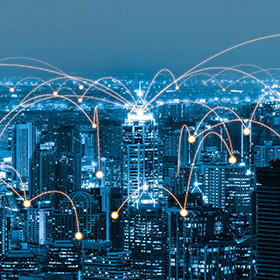

Organisations are increasingly moving workloads to the network edge. According to a report from IDG/Foundry, an average of 35% of computing resources in the United States now reside at the edge.
The rationale behind moving workloads to the edge is the analysing of data as quickly as possible. This requires establishing computing, networking and storage capabilities close to the endpoints that generate data, whether it’s mobile devices, factory machinery or AI-enabled vehicles.
However, this also requires additional energy resources which in turn consume power. In a country that is already taking considerable strain with unstable energy supply, this can be a dealbreaker. The good news is that the edge can be implemented sustainably and, in fact, save energy.
Buildings energy optimised
Enterprises in most industries consume vast quantities of energy. Lighting, heating, cooling, ventilation and asset operation all require reliable power, often around the clock. Cooling alone accounts for 40% of total data centre energy consumption. Transporting data from endpoints to a centralised data centre uses energy.
Sensors at the edge and software in network operations centres allow organisations to easily monitor and control energy consumption across all remote sites. Like any data generating device, these tools constantly produce information about building efficiency, which can then be used to further improve energy usage.
Using edge computing may even save 60% of data transport energy consumption. Smart building technology can yield 5-25% energy savings on HVAC systems and nearly 50% savings for lighting. Optimal use of smart building tools is not possible without the edge.
Bandwidth optimisation
Edge computing reduces the networking traffic coming in and out of centralised servers, reducing bandwidth and energy drains. This frees up bandwidth at the data centre and the organisational bandwidth of any of the centralised servers on-premises.
Data that does need processing in the cloud tends to be critical, limited by the constraints of the edge device itself. The device handles what it can and sends only important data to the cloud. These natural limitations prevent unnecessary processing and subsequent energy usage.
Use what you have
With the edge, many companies have already deployed sensors and devices that are currently underutilised. By moving data processing back to the edge instead of sending everything to the cloud, companies reduce their dependence on the central cloud and their contributions to energy drains.
Every single piece of the edge stack is optimised to work efficiently. Many can run even without Internet connection, allowing processing to continue offline which saves on energy consumption.

© Technews Publishing (Pty) Ltd. | All Rights Reserved.